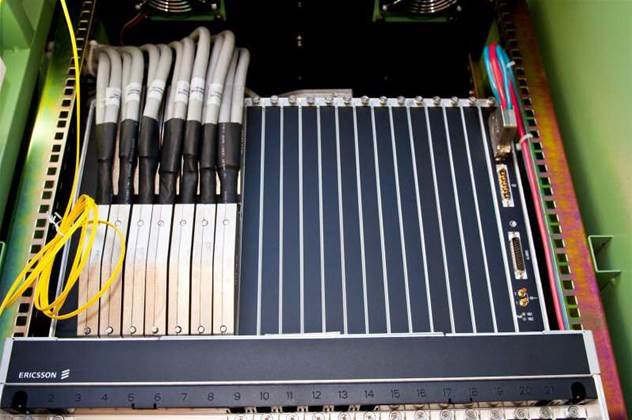Minister for Broadband, Stephen Conroy has advised Internet Service Providers to continue to deploy ADSL equipment into exchanges, despite an agreement cut between NBN Co and Telstra which aims to replace the copper lines with which such equipment would connect customers to the internet.

In an interview with iTnews to be published in full this week, Conroy said DSLAM (digital subscriber line access multiplexer) equipment should continue to be deployed, despite an agreement with Telstra that would make the technology extinct in a National Broadband Network (NBN) world.
NBN Co entered into an agreement with Telstra on Friday that binds Telstra to pulling out its copper lines and replacing it with fibre at 1500 homes in Point Cook near Melbourne, an upgrade that would act as a field trial for the brownfields deployment of the NBN.
"There has been a lot of speculation about what has been going on in the discussions [with Telstra] and we wanted to make sure people had an update," Conroy said.
"And what we have seen is that Telstra and NBN Co have reached a framework which includes a preferred model to go forward on in the negotiations and that preferred model is what we call migration."
He explained how the migration would work.
"We knock on Ben's door, 'I'm from NBN Co [and] I've come to connect your fibre'.
"[We would be] taking the copper [cable] out and migrating customers from Telstra's copper to NBN Co's fibre.
"And that transfers customers from Telstra across to NBN Co."
At Telstra's AGM, chairman Catherine Livingstone predicted that some 4,000 homes would have to be migrated from copper to fibre every day in order to meet the NBN's eight year roll-out deadline.
"This is an eight year project, it could possibly be shorter with Telstra's cooperation if we finalise this partnership," Conroy said.
DSLAM deployment
Minister Conroy saw no reason for ISPs to cancel plans to deploy more DSLAMs on Australia's existing copper network.
"This is an eight year program," he said.
He said that depreciation time frames for DSLAMs was getting "faster and faster" and said they had "come down massively in price" in the last few years.
"Moore's law applies and DSLAM equipment is becoming cheaper and cheaper," he said.
Minister Conroy said the fibre backhaul being built as part of the Broadband Blackspots program - a 6,000 kilometre roll-out of fibre to Geraldton, Roma and Darwin - has already encouraged the likes of Primus, Internode and iiNet to extend their DSLAM footprint and provide ADSL services.
"They intend to put DSLAMs into these exchanges, because for the first time they will be able to afford the backhaul to go and compete with Telstra," Conroy said.
"So ISPs have put up their hand and said this is the best thing that you could do."
NBN Co and Telstra have yet to advise ISPs of a timeline or migration path from copper to fibre to aid their DSLAM investment decisions.










 iTnews Executive Retreat - Security Leaders Edition
iTnews Executive Retreat - Security Leaders Edition












_(1).jpg&h=140&w=231&c=1&s=0)



